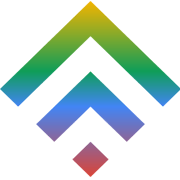How the Internet of Things will Change Cloud Computing
7 February 201510 steps to understanding your IT before moving to cloud
16 February 2015Cloud computing is today a basic necessity for most organizations and with the current significance of technology this is only the norm. We can however appreciate the growth of cloud computing from its conception to its current state by looking at how far the system has come. Initially, computers were unable to interact with one another except through the internet but today we have so many ways to access data from any computer in any location across the globe. This is one of the advantages of cloud computing, in that the limitations to access have been reduced to passwords and user ids thus allowing you access a cloud from anywhere at any time. The evolution of cloud computing can be broken down to its first phase namely grid computing, then utility computing and finally the current cloud computing in which SaaS is the way to go.
Grid Computing
The concept of cloud computing started out in the late 1980’s in the form of grid computing where databases were shared over long distances through optical networks. These were mostly used by universities that needed real time collaboration when seeking solutions to a single scientific problem. This however wasn’t exactly like cloud computing since it only allowed the numerous connected computers to work in parallel while seeking to solve the problem at hand. The emphasis here was on the individual computing process as much as the end service unlike cloud computing which unifies the computing process to deliver the service.
Utility Computing
After the grid computing, cloud computing evolved as a system in which the numerous computers are connected to a central workload that contains servers, storage, applications, networks and processes that are tailored to suit the needs of the users or tenants. This means that cloud computing has grown in such a way that it can actually support one or more grids. When the grids became increasingly popular in the 1980’s there was a need to expand into more than just parallel computing to solve problems across different universities. The expansion took place within the concept of virtualization with the creation of storage and networks as well as applications that were not based on any specific infrastructures. This was then known as utility computing, and it allowed for cluster computing on virtual platforms over networks.
Cloud Computing
With the increase in demand for the virtualization of computing, the expansion became so rampant that it reached a point of abstraction. Virtual servers became the way to go as more organizations came to appreciate the significance of the interconnectedness in computing. Other than the networks, storage and processes as well as the applications, a new addition was the ability of software providers to actually tone down the value of their products to meet the budget of the small and medium enterprises. With grid and utility computing, only the large businesses could afford most software applications but with cloud computing companies are able to get the software that they need based on its value to them. The cloud computing thus came in with a system of ‘pay-as-you-go’ for their software applications. This is because other than the initial advantages that the system had, when it became cloud computing it was more of a system aimed at helping organizations to run more effectively. SaaS continues to be the most impressive aspect of cloud computing and is expected to take organizations to a new level with new and more advanced innovations in the future.
SaaS
SaaS means Software as a Service and it is a way for software makers to avail their products to organizations at a lower fee depending on the usage. Large organizational applications like ERP are for example more affordable today when they are availed over the cloud to be accessed when the organization in question is willing and able to pay for it. This means that rather than selling the software as a product it is being offered as a service, and paid for per usage. This is one of the most impressive aspects in the evolution of cloud computing as more organizations gain access to critical software and they can thus enjoy technology at their budget. More companies will appreciate this feature thus making it a central aspect of any future growth in cloud computing.









